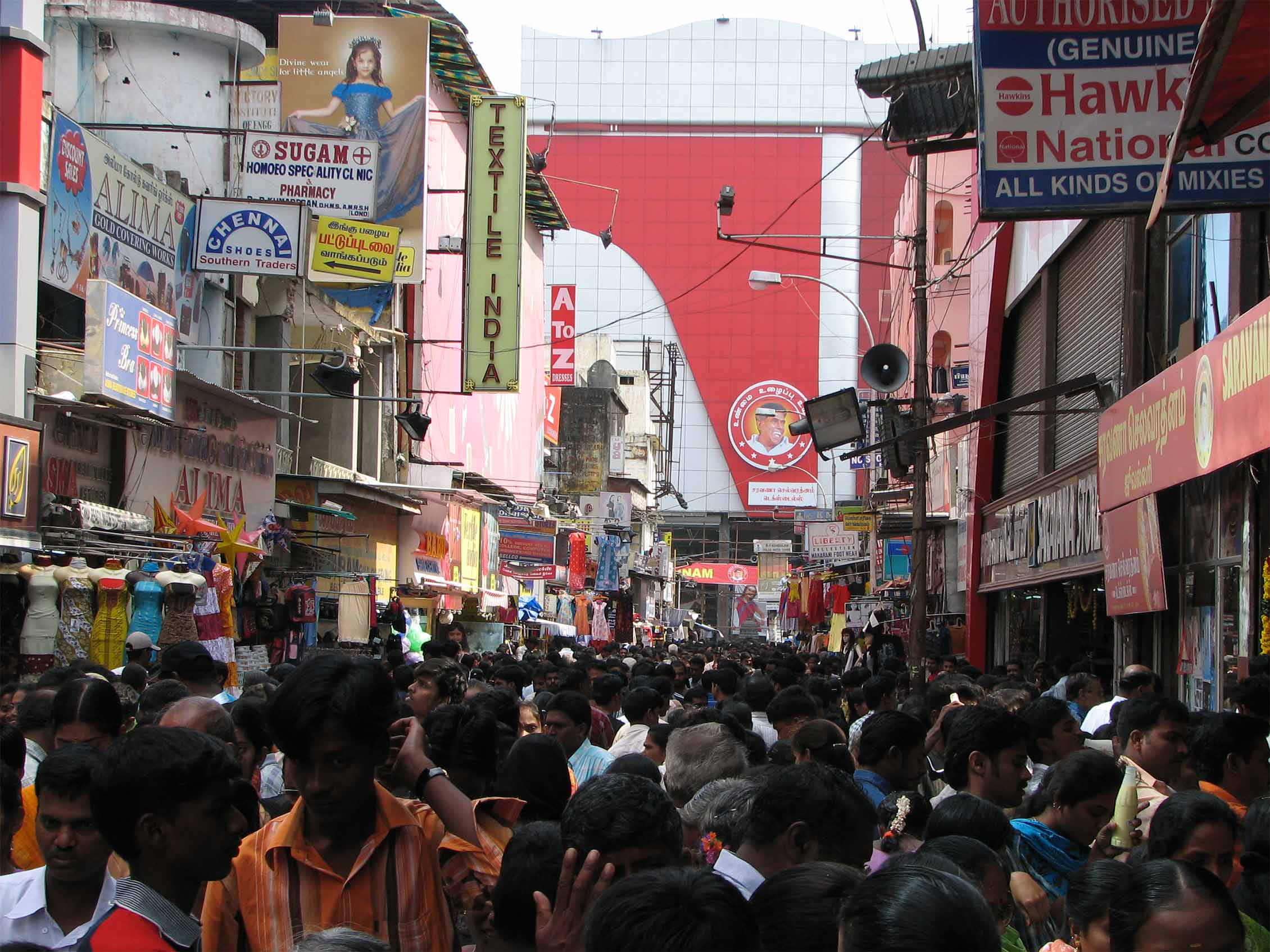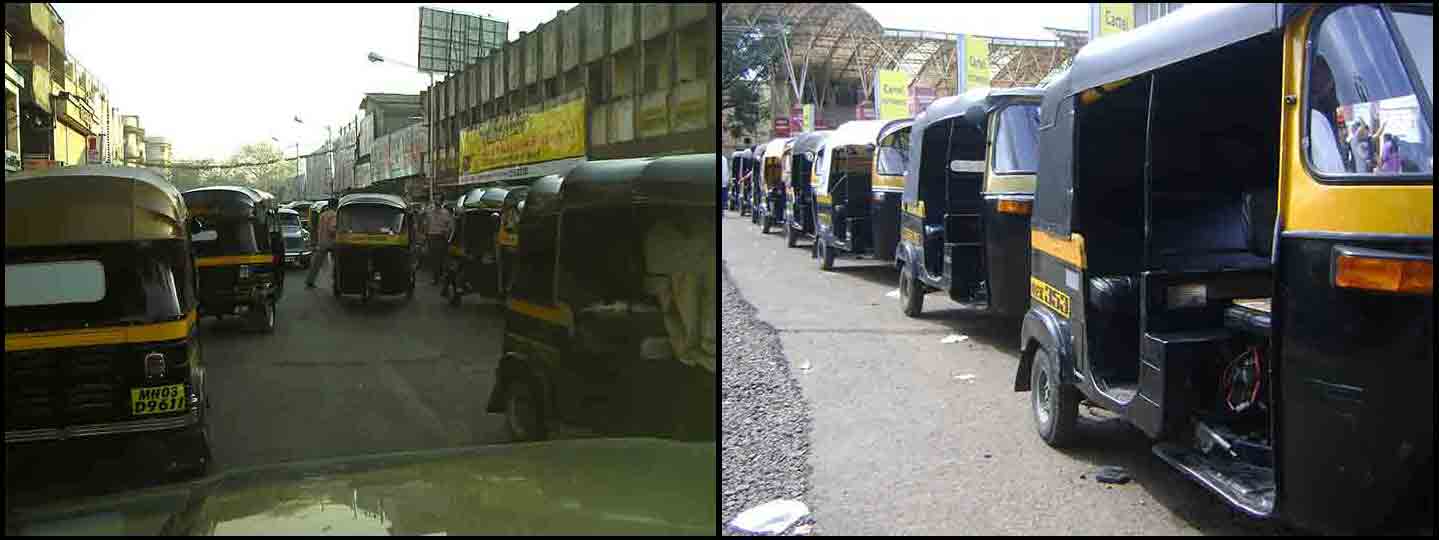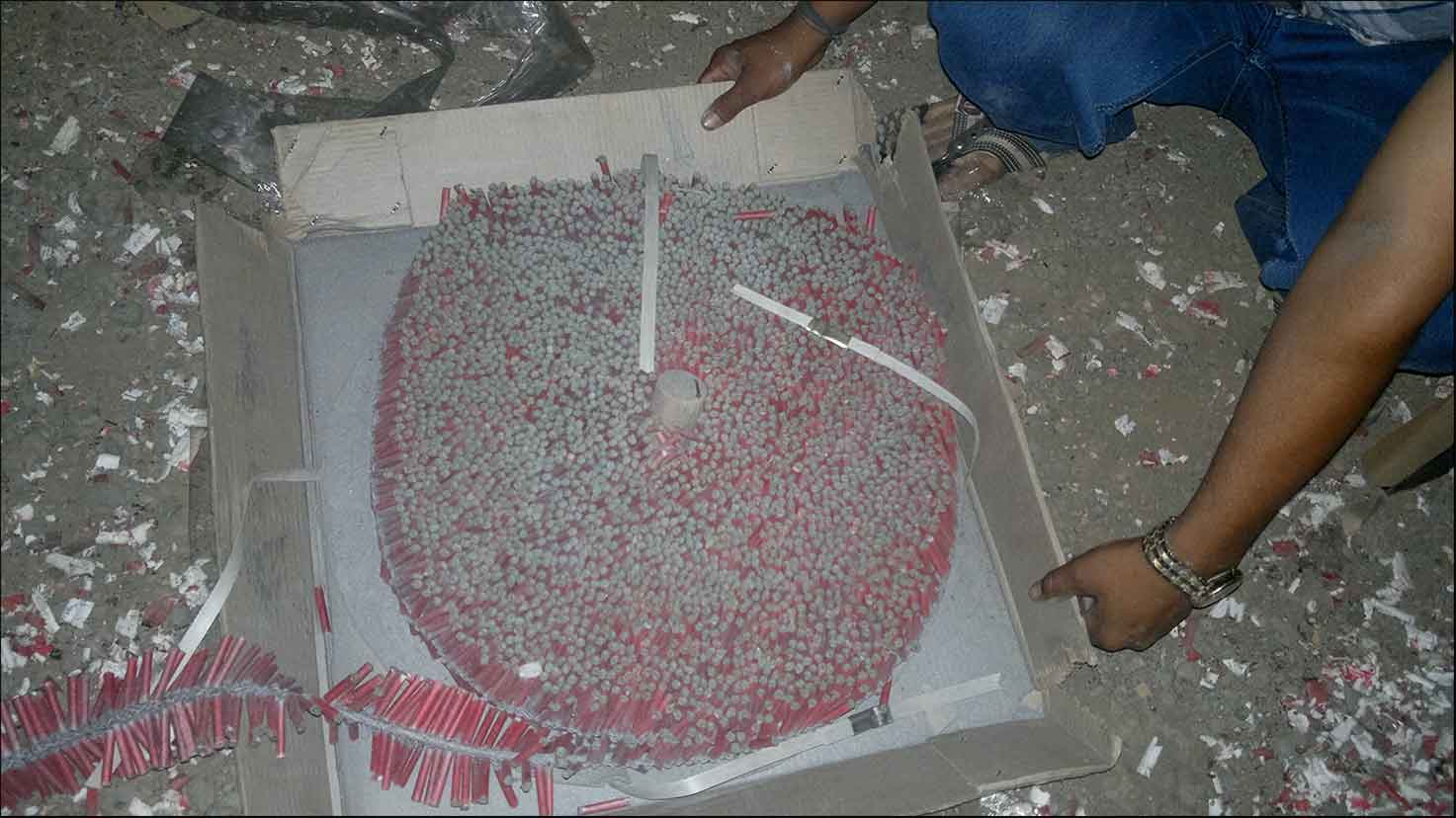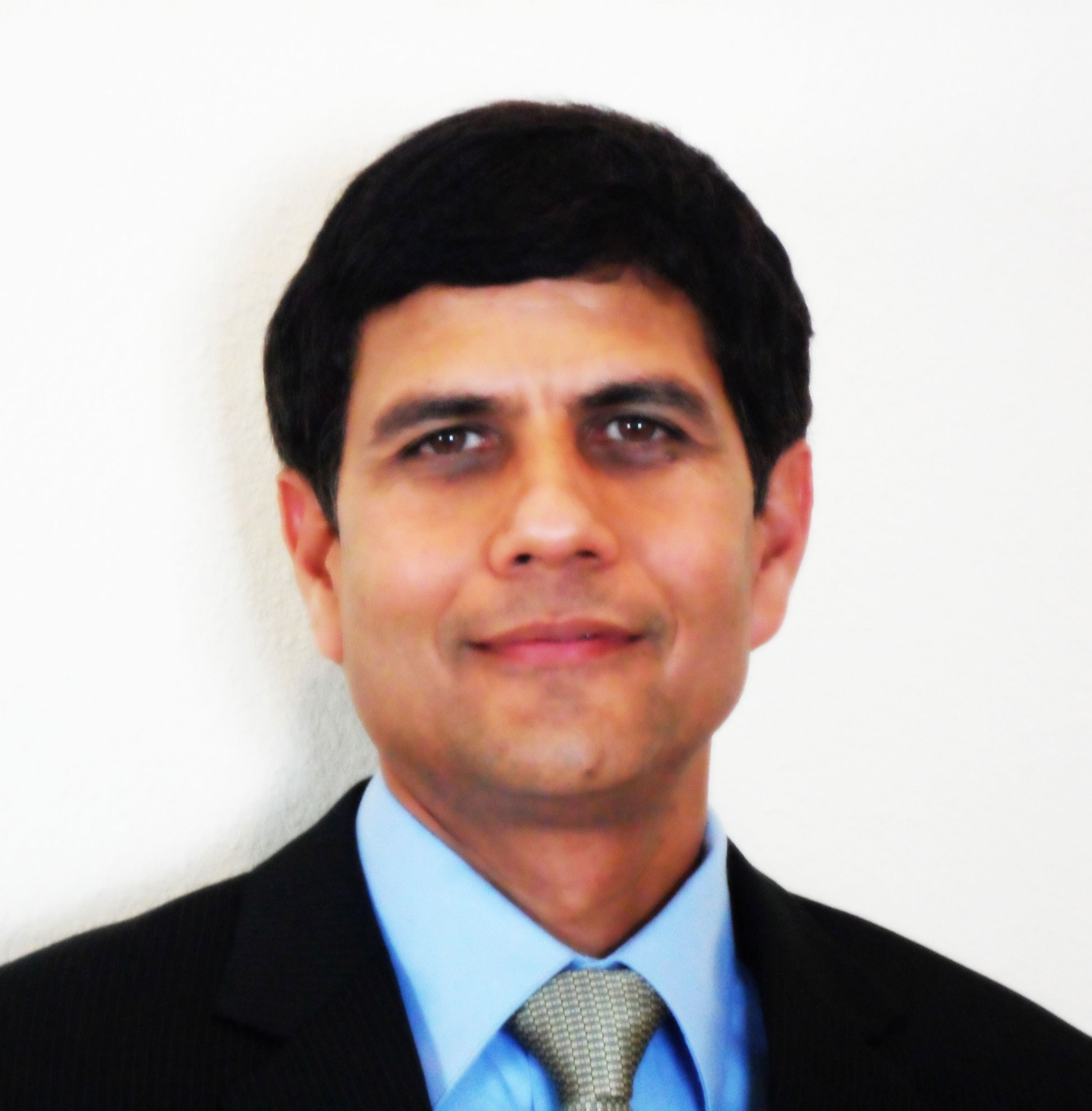
Acoustiblok® Soundproofing India
Vinod Sharma has been named Acoustiblok Executive Vice President of Business Development for India and the contiguous region. Sharma, who signed on as Director of Engineering for the Tampa-based sound abatement and thermal insulation company in March, will be responsible for expansion and growth of Acoustiblok, Inc. and Thermablok, Inc. in South Asia. He will report directly to CEO and President Lahnie Johnson.
Sharma, a native of Jaipur, India, moved to Tampa from Brunei in 1998. He brings more than 15 years’ experience in consulting, design engineering and project management for industrial, governmental and public agencies in the U.S., India and Brunei.
Sharma earned a bachelor’s degree in Mechanical Engineering from the National Institute of Technology (NIT) in Jaipur, India.


Rising Noise Pollution: a Bleak Future for Mumbai’s Youngest Citizens
You can’t help but feel for Mumbai. The commercial and entertainment capital of India, it ranks as a top 10 world commerce leader in terms of global financial flow, generating five percent of India’s GDP. Mumbai is responsible for 25 percent of all of India’s industrial output, 70 percent of the country’s maritime trade, and 70 percent of India’s economic capital transactions.
But Mumbai’s noise pollution is eviscerating its citizen’s quality of life and challenging the future of its children.
One of the world’s noisiest cities, Mumbai’s din is so severe that the future health of its residents is in question. In fact. levels of noise and air pollution in Mumbai are through the roof and rising, and the noise is having a marked effect on the sleep patterns and health of the people who live there.
In residential areas, recent studies show that noise levels have steadily increased both during the daytime and at night over the past five years. The city’s established “silence zones” are never silent, and noise levels measure in at 63 decibels (daytime) and 78 decibels (night time) – the allowed limits are 50 and 40 decibels respectively. In Mumbai, areas within 100 meters (328 feet) of schools, hospitals, shrines and courts are designated as silence zones.
Mumbai has 1,112 designated silence zones that are routinely disregarded. In fact, noise in these silence zones has steadily increased over the past four years, and officials even admit that most people are unaware that silence zones exist in their communities.
According to Mumbian environmentalists and public health officials, its residents are unaware of the health hazards they face from the never-ending exposure to high decibel sounds. Heart attack rates are steadily increasing, and cardiologists blame Mumbai’s dismal noise pollution stats for triggering the stress hormones that increase blood pressure and raise the risk of heart attack significantly. Mumbai’s high air pollution rates are exacerbating the health effects of the city’s noise, which leaves many Mumbian health officials to question what it will take to effectively address this burgeoning risk to the health and welfare of the general population.

Mumbai has some serious obstacles to overcome if it is to ever address its noise pollution problem in any meaningful way. Its citizens are largely unaware of the fact that noise can cause them harm, although the Indian government does consider it a serious problem. By aligning itself with the World Health Organization, the Indian government has tried to establish standard noise caps for residential areas (55 decibels), commercial areas (65 decibels) and industrial areas (75 decibels). However these noise caps are violated daily and offenders are almost never admonished.
In Mumbai, like most of India’s cities, traffic noise is the primary cause of noise pollution, and there is no escape from the 24/7 cacophony of traffic-related sound, from construction to horns honking incessantly, night and day with no relief. In 2008, to honor World Health Day, Mumbai held a “No Honking Day” – by all accounts a remarkable feat made possible only because of the Mumbai traffic police’s unwavering efforts to enforce the ban. Mumbai’s citizens had a taste of what it was like to experience a day without the unwelcome blaring of auto horns filling every waking minute. For the average Mumbai citizen, the respite was nice but only impeded one of the many sources of Mumbai’s daily noise monsters.
Predictions were that “No Honking Day” would lead to countless accidents and chaos among both motorists and pedestrians, although no problems occurred. Still, the one day moratorium didn’t scratch the surface of Mumbai’s very serious noise pollution problem.
Mumbai and Delhi, two of India’s most important metro areas, are also two of the world’s noisiest places, and the world in general is a dangerously noisy place. Many organizations taking on the world’s noise pollution problems blame governments for waiting too long and not taking the health risks of noise pollution seriously. After all, just 40 years ago most of the world’s inhabitants had some place to go to escape noise levels that were a risk to their hearing and health. Today, the earth’s quiet spaces are growing smaller and more elusive from one year to the next.
As long as governments are in bed with corporations, the quality of life for Mumbai’s citizens as well as the citizens of most of the world’s major metropolitan areas will never be a priority. Where is the follow-up to environmental reports telling us about the dangers of the noise to which ordinary citizens are subjected? When will the well-being of the people of Mumbai matter to its government more than the economic impact of regulatory compliance?
There’s got to be a Nobel Prize in it for the person who comes up with the answer. In the meantime, the children of Mumbai, Delhi, Buenos Aires, Cairo, and New York City (to name just a few of the world’s noisiest cities) are facing a future of hearing damage and loss, impeded learning, sleep disorders, elevated blood pressure and heart disease without ever having known any other life but one filled with noise.

Mumbai’s Nuisance Noise: Hearing Loss and Health Problems Escalate
You are stuck in traffic in Mumbai. A sea of vehicles surrounds you. You try to shut out noise from revved-up engines and impatient horns. The increasingly frantic crescendo, much like the grand finale from a work by Rachmaninov, makes you want to shoot little darts tinged with South American poisons at the drivers of the cars around you or pull an Ambani and hail a passing helicopter.
Interrupting your desperate escape to your happy place is your autorickshaw guy, honking. He presses his thumb on the button, holds it there and doesn’t let go.
Mumbai’s three-wheeled menace.
After years of traveling by public transport, I have realized it is the autorickshaw driver above all who really loves to blow his own horn at miles of insurmountable traffic spread out in front. There is no possible escape from the crushing noise in sight. Yet the indefatigable driver insists on repeated blasts of his horn, thinking this will solve the problem. What’s the point? I often ask them. Is the traffic ahead going to magically part like the Red Sea before Moses and let you through? You think the people ahead are all stuck in one spot on purpose, just to bug you? A non-committal or puzzled look or a lecture all the way to your destination are the only two responses.
I sit in the midst of all the cacophony, slowly grinding my teeth, considering banging my head against the side of the seat to ease the pain. Or getting those embarrassingly large noise canceling headphones. Or writing a letter to car manufacturers. “Dear Sirs, Can we just do away with horns altogether? Are they really needed?” Apparently they are, as one autorickshaw driver I asked said, as in the absence of horns, drivers would end up running down most pedestrians.
Noise-induced hearing damage is related to duration and volume of exposure — safe exposure being not more than 85dB for about eight hours. At 100 dB or more, damage can take place in 15 minutes. The level from which humans can begin to identify sounds is 10 to 15dB. At the other end is the threshold of pain — 140 dB. Prolonged exposure to this level can cause pain, nausea and loss of muscle control. Noise as a form of torture has been used by governments against perceived enemies, detainees and prisoners for a long time. The Nazis employed it. In 2003, the BBC reported that the U.S. Army had used Metallica’s “Enter Sandman” and Barney the Purple Dinosaur’s “I Love You” to torture Iraqi detainees, playing the songs at high volume over and over.

Now compare that statistic to the ear-blasting 145dB we are exposed to during festivals like Ganpati, where the level is equivalent to being close to a jet engine on take-off. Or the 127dB football players were exposed to from the thousands of vuvuzelas at the World Cup this year. No wonder that players have asked for a ban on the instrument with the drone-attack sound. Argentinean football player Lionel Messi complained about the vuvuzelas after Argentina’s 1-0 victory over Nigeria. It is impossible to communicate, he said, it’s like being deaf.
Maybe Messi should try visiting Mumbai sometime to get used to that feeling of being stuck inside a vuvuzela zone, night and day, and that’s your life.
The growing racket against noise is not surprising since its pollution, like any other environmental issue, is increasingly being viewed as a human rights issue. In October 2009, the International Euronoise Conference was held in Edinburgh, with 800 delegates discussing noise pollution as an environmental concern. Here’s why:
Silent zones of zero tolerance
Unfortunately, at this point, the only solution is zero tolerance. Whatever the event — whether it’s a festival, a neighborhood party or construction near his building, if the noise generated is breaking rules, call the police station and file a complaint. The Environment Protection Act makes noise pollution a non-bailable offense and stipulates a jail term of five years and a hefty fine of Rs 100,000.
Recently, I had to look up the rules on noise when, late in the night, my windows started shaking due to the noise from a party next door. Under the Environmental Protection Act of 1986, and the Rules on Noise 1989, and Noise Pollution (Regulation and Control) Rules 2000, noise is classified as a pollutant. And just so you know, the maximum decibel levels permitted are as follows: Industrial areas 70 db (10 p.m. – 6 a.m.) to 75 dB (6 a.m. to 10 p.m.); similarly, commercial areas must stay between 55 dB and 65 dB. In residential zones it’s 45 dB to 55 dB.
Now we just need to get the message to the 22 lakh vehicles in Mumbai, the 8,000 buses, 55,000 taxis and the swarm of auto rickshaws – god bless them.

India Cracks Down on Noise Pollution During Diwali Festivities
As noise pollution becomes a global epidemic, India — home to three of the world’s noisiest cities: Delhi, Mumbai and Kolkata — has taken dramatic measures to establish quiet and privacy in a society inundated with the noise problems that accompany modern life. Indians are increasingly installing noise barriers and soundproofing materials in their homes, yards and businesses as noise pollution awareness grows.
India’s Supreme Court has put strict noise ordinances in place in an attempt to curtail unwanted and unnecessary sounds that are creating health problems in its citizens, and contributing to an unhealthy environment. Some Indians are embracing their new responsibility to tone down the ambient noise, particularly in the biggest cities, and adopting an environmentally friendly approach to some long held traditions.
One example is the upcoming celebration of Diwali, an annual Hindu festival of lights marked by large family gatherings, bursting firecrackers, raucous air horns, and lighting clay lanterns to signify the triumph of good over evil. Diwali takes place over five days in October and November.
Much like fourth of July celebrations in America, Diwali is not complete without its noisy elements – fireworks and air horns, most specifically. This year, however, Hindus living in India’s capital city of Delhi and other major metro areas plan to tone down their celebration of Diwali by opting for eco-friendly firecrackers and abstaining from using air horns, in order to lower noise levels.
India’s lowered noise standard is a growing trend but still catching on across the country. To make sure that firecrackers and air horns do not become a public nuisance this year, law enforcement will be working throughout the festival to remind celebrants to keep the noise down.


District administrations and the police plan to impose a total ban on the loudest firecrackers (exceeding decibels of 125, comparable to the sound of a tire blowout), in keeping with the new guidelines governing noise pollution levels across India.
Offenders can be arrested and even jailed under India’s Noise Pollution (Regulation & Control) Rules and the Environment Protection Act, and the guilty could be fined up to Rs 1 lakh (2,250.00 U.S. dollars) or face imprisonment for up to five years.
All the major cities are demanding eco-friendly fireworks, made of recycled paper and contain fewer chemicals than traditional versions, which makes them quieter and emit less smoke and harmful toxins.
Delhi and Kolkata lead in the purchases of eco-friendly fireworks, which actually cost less than traditional fireworks.
Residents in rural areas and small towns still prefer traditional firecrackers, but city residents insist they can celebrate with the green alternatives to noisy firecrackers without sacrificing festival fun.
Indian authorities and the pollution control board are also making it mandatory for firecracker manufacturers to mark each product with its corresponding level of noise pollution.
Last week, Kolkata police raided several parts of the city to identify shops selling prohibited air horns. Shop owners caught selling banned air horns were summoned to the West Bengal Pollution Control Board (WBPCB) office for a hearing
The use of air horns and the rampant use of banned firecrackers, particularly during the weeks before and after Diwali, are a major source of noise pollution across India. WBPCB authorities and the police plan to conduct raids during Diwali. However, with the exception of a few arrests, little is done to prevent banned fire crackers from entering city markets.
Although noise ordinances established in India may seem harsh to some, they represent a growing awareness of the dangers of noise pollution in communities across the globe, and a growing trend toward managing noise, just as other forms of pollution have been addressed in the latter half of the 20th century and early 21st century. India is already proving itself to be a leader when it comes to quieting the world.

